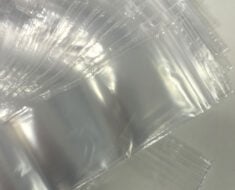Have you ever thought about where your food packaging ends up once you are done with it? The truth is, much of it goes into landfills or ends up polluting our oceans. While some packaging like bottles for food packaging can be recycled, others cannot. The environmental impact of packaging waste is significant and is an issue worth understanding.
The Issue of Food Packaging
Food packaging makes up a substantial portion of municipal solid waste worldwide. These products can range from plastic bags to polystyrene foam containers.
Environmental Impact
Due to its non-biodegradable nature, most food packaging leads to land, water, and air pollution. It litters our ecosystems and harms wildlife that mistaken it for food.
Bottles for Food Packaging
Although certain packagings like bottles are recyclable, many still find themselves in oceans or landfill due to improper disposal practices.
The Carbon Footprint of Packaging
Packaging production also contributes to greenhouse gas emissions due to the energy intense manufacturing processes of plastic and paper goods.
The Role of Over-Packing
Over-packing, the practice of using more material than necessary for packaging products, results in excess waste and ultimately higher carbon emissions.
Alternatives to Traditional Packaging
A shift towards sustainable alternatives such as plant-based materials can help mitigate the impacts of food packaging on the environment. Bioplastics and cardboard are options worth considering.
Promoting Recycling
Countries worldwide have implemented various recycling initiatives aimed at encouraging consumers to recycle food packaging, thereby diverting them from landfills.
Consumer Behavior
Consumers play a major role in this equation. Awareness and education about reducing, reusing, and recycling can tremendously impact the reduction of packaging waste.
The Truth About Compostable Packaging
Even though compostable packaging sounds ideal, it often requires very specific composting conditions that aren’t available everywhere.
Biodegradable Does Not Equal Sustainable
The term biodegradable could be misleading. If not disposed of correctly, they might end up in a landfill where they would not decompose satisfactorily.
Choosing Products with Minimal Packaging
One of the simplest measures consumers can take to reduce their contribution to packaging waste is by selecting products with minimal or no packaging.
Fighting Food Waste
Sometimes, packaging is necessary to prevent food waste. The challenge is finding a balance between preventing food spoilage while minimizing packaging use.
Legislative Measures
Regulation plays a key role in driving companies towards adopting sustainable practices when it comes to product packaging and promoting policies to mitigate the effects of such waste on the environment.
The Greenwash Phenomenon
Greenwashing, a deceptive form of marketing where companies suggest that their products are environmentally friendly when they are not, adds another layer of complication to the environmental aspect of food packaging.
Rethinking For the Future
The future of food packaging lies in innovation and rethinking current practices. A complete transition from single-use packaging could be an effective solution for the environment and future generations.
A Final Note
While decreasing food packaging’s environmental footprint can seem daunting, many solutions exist. The combined efforts of consumers, companies, innovators, and lawmakers could lead to environmentally sustainable food packaging. Awareness and education might be the first significant steps towards that goal.






